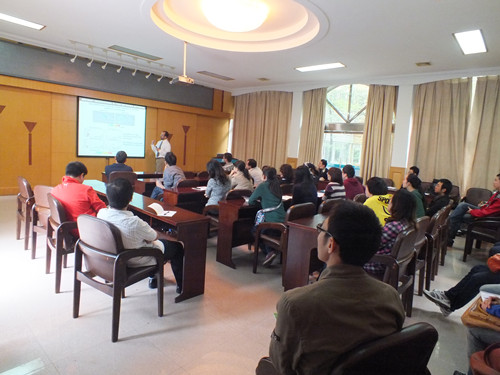At the invitation of Professor LI Xinqing, Dr. Dylan and HU Lu from the University of Minnesota visited the Institute of Geochemistry, Chinese Academy of Sciences (IGCAS) from September 24 to 26, 2012.
On September 24, they undertook a field investigation in the selected location of the atmospheric observation tower in Puding Observation and Research Station for Karst Ecosystem and put forward some valuable suggestions. During the visit, the Sino-American scientists exchanged the ideas on their current research status and the methods on studying the volatile organic compounds in the atmosphere.
As a scientist of atmospheric chemistry and an expert at studying organic compounds in the atmosphere, Dr. Dylan gave an academic presentation titled “Organic compounds in the atmosphere: Sources and chemical impacts” to the IGCAS scientists in the lecture hall of the State Key Laboratory of Environmental Geochemistry (SKLEG). Firstly, he described the researches in the field of atmosphere science in the University of Minnesota as well as the corresponding primary scientists. Then he focused on introducing the work of his own research group: using the tall towers, aircrafts and satellites to record the changing and the sources of the organic compounds in the atmosphere, and then combining with the atmospheric models to predict the trends and the impacts in the future. Their results showed that the methanol followed a strong seasonal cycle driven by biogenic source.
After Dr. Dylan’s presentation, HU Lu presented the details of their research based on the tall tower observation, with a talk titled “Tall Tower-based Constraints on Natural and Anthropogenic Acetone Sources in North America”.
The seminar ended with a warm discussion between the speakers and the audience.

Dr. Dylan giving presentation (Image by IGCAS)

HU Lu giving presentation (Image by IGCAS)

Dr. Dylan discussing with the audience (Image by IGCAS)
(By ZHANG Like)